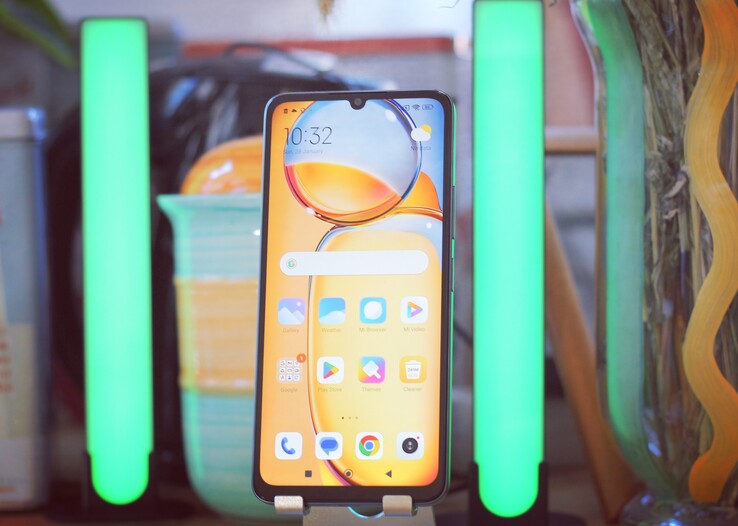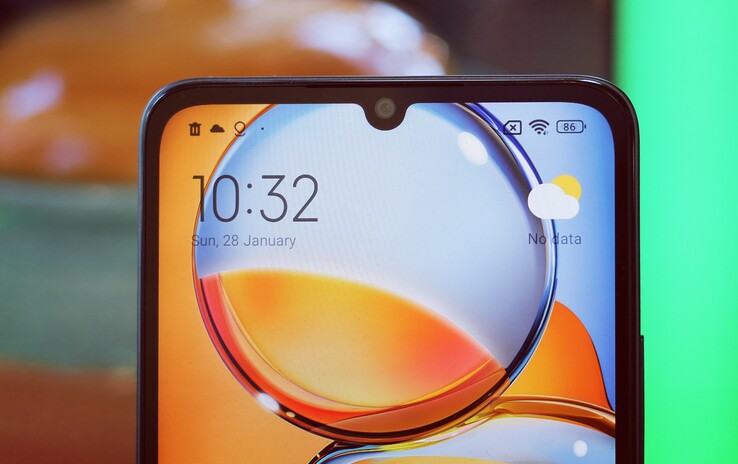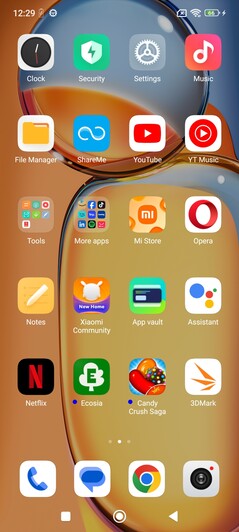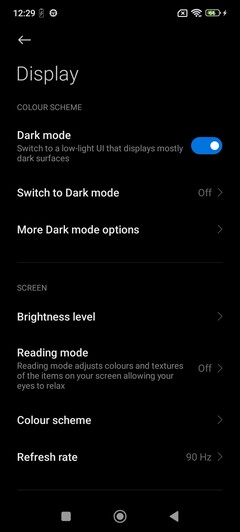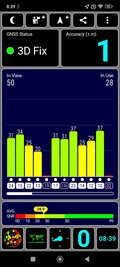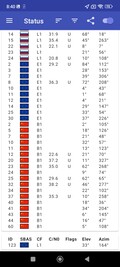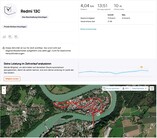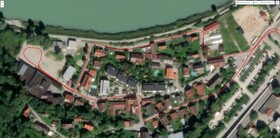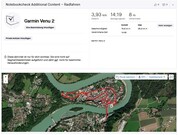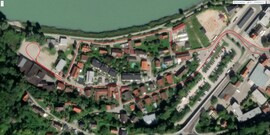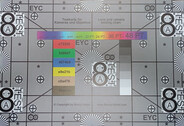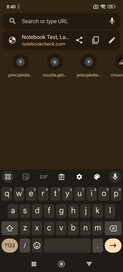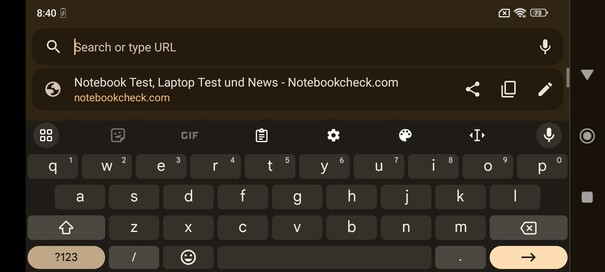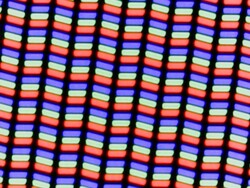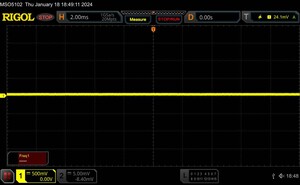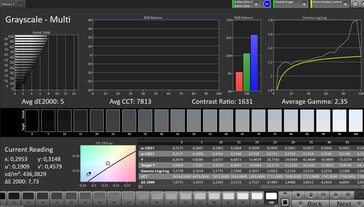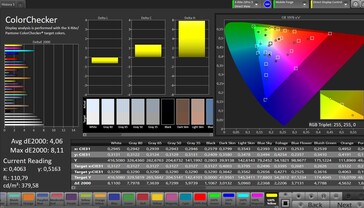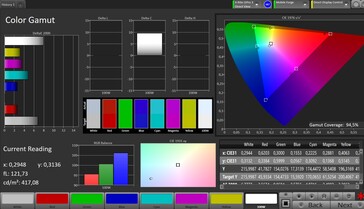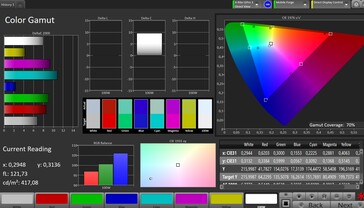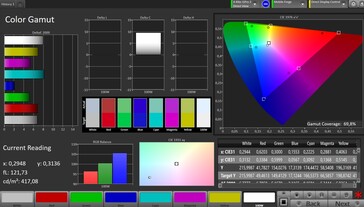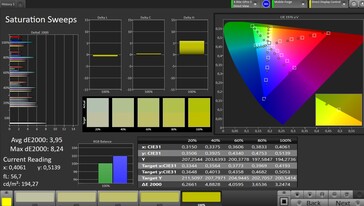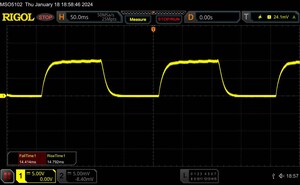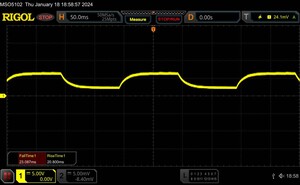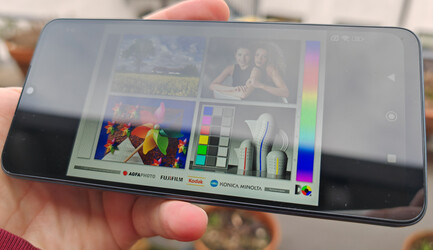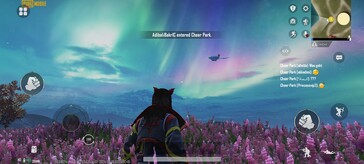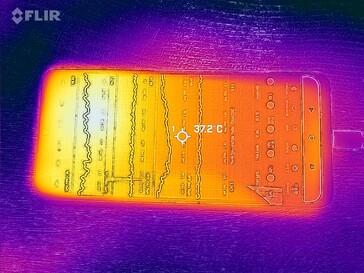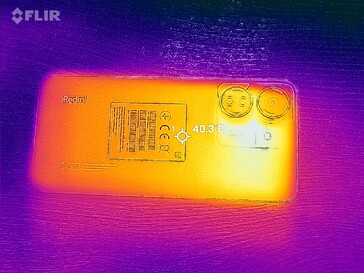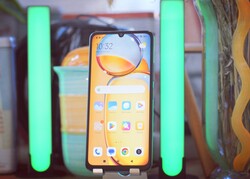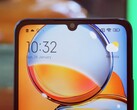Xiaomi Redmi 13C smartphone review – A fresh design and lots of storage on this inexpensive phone
"Finally, no more micro-USB port"—this was our first thought when unpacking the Redmi 13C. When testing the phone's predecessor, we noted the now outdated port as a negative point. Now, the affordable Xiaomi phone is back up to date, and it has even been given a whole new design.
It continues to rely on the Helio G85 as a processor which, for the phone's price range, should still deliver enough power. Plus, it features generous memory: If required, you can select up to 8 GB RAM and 256 GB of storage.
In this test, we will be taking a closer look at whether the Xiaomi Redmi 13C is worth the money or whether it might not be such a successful comeback after all.
Possible competitors compared
Rating | Date | Model | Weight | Drive | Size | Resolution | Price |
|---|---|---|---|---|---|---|---|
| 77.7 % v7 (old) | 03 / 2024 | Xiaomi Redmi 13C Helio G85, Mali-G52 MP2 | 192 g | 128 GB eMMC Flash | 6.74" | 1600x720 | |
| 76.6 % v7 (old) | 04 / 2023 | Xiaomi Redmi 12C Helio G85, Mali-G52 MP2 | 192 g | 128 GB eMMC Flash | 6.71" | 1650x720 | |
| 78.1 % v7 (old) | 09 / 2023 | Motorola Moto G14 T7255 (T616), Mali-G57 MP1 | 177 g | 128 GB UFS 2.2 Flash | 6.50" | 2400x1080 | |
| 77.2 % v7 (old) | 07 / 2023 | Nokia G11 Plus T7200 (T606), Mali-G57 MP1 | 192 g | 32 GB eMMC Flash | 6.52" | 1600x720 | |
| 75.9 % v7 (old) | 07 / 2023 | Samsung Galaxy A14 LTE Helio G80, Mali-G52 MP2 | 201 g | 64 GB eMMC Flash | 6.60" | 2408x1080 |
Case – A lot more high-quality
Xiaomi has given the design of the Redmi 13C a complete overhaul, and for good reason: Its predecessor was slowly but surely looking more like a typical cheap smartphone, with a somewhat lifeless striped pattern on the back and rounded edges.
The current model has been designed to look much more contemporary. Although the manufacturer still relies on a plastic frame and back, it now looks much more elegant: You can choose between the colors Clover Green, Glacier White, Midnight Black and Navy Blue. That being said, all the colors are pretty muted, so they won't stand out in a professional setting. The back of the phone is matte, although our blue test sample shimmers slightly when it catches the light. The white model looks the most eye-catching: It looks as if individual crystals are forming on the surface of it.
The square camera module has a high-gloss finish, making it stand out visually from the rest of the back. The module sits flush with the back and only the lenses themselves protrude from the case. There are clearly visible bezels around the screen on the front but in this price class, this can be forgiven.
At 192 grams, the Redmi 13C weighs just as much as its predecessor and it is also an average weight for a smartphone of this size—meaning it is neither too light (which could appear cheap), nor is it too heavy (which would tire out your arms). It has been assembled well and even using stronger pressure, you can't twist or dent the phone.
Connectivity – A real storage giant
Xiaomi offers the phone in different storage variants:
- 128 GB storage / 4 GB RAM: ~US$160
- 128 GB storage / 6 GB RAM: ~US$180
- 256 GB storage / 8 GB RAM: ~US$200
For a phone costing well below US$200, these are quite impressive storage sizes—even if it's only relatively slow eMMC flash. In our eyes, however, it barely makes any sense to spend US$20 more to go for the model with more RAM and 128 GB of storage.
Thankfully, Xiaomi has finally decided to rid the phone of its micro-USB port as seen on its predecessor, the Redmi 12C. Perhaps the EU is partially to thank for this, as it forces manufacturers to make use of one standard connection. In any case, the Redmi 13C now features a USB-C port which is connected internally via USB 2.0.
NFC is on board, too, meaning you can easily use the phone for contactless payments via corresponding apps.
microSD card reader
Aside from the two SIM slots, the phone also features a designated microSD card slot which you can use to expand its storage. We tested the card reader thoroughly using our Angelbird V60 reference card, with the results showing that it performs well within the class but also compared to the phone's predecessor in particular: It achieved transfer rates of around 30.2 MByte/s, plus, they remained stable even when repeating the test. However, the Samsung Galaxy A14 LTE showed that things can go even faster.
| SD Card Reader - average JPG Copy Test (av. of 3 runs) | |
| Samsung Galaxy A14 LTE (Angelbird AV Pro V60) | |
| Xiaomi Redmi 13C (Angelbird V60) | |
| Nokia G11 Plus (Angelbird V60) | |
| Xiaomi Redmi 12C (Angelbird V60) | |
| Motorola Moto G14 (Angelbird V60) | |
Cross Platform Disk Test (CPDT)
Software – 4 years of software support
Now, you would assume that a software called MIUI 14 would be based on Android 14. However, strangely enough, Xiaomi's internal classification seems to be a number ahead, as Android 13 makes up the basis of this operating system. The system has been customized in many areas, so Xiaomi newbies may take a little while to find their feet.
The phone comes with lots of apps pre-installed—on the one hand ones from Xiaomi, but also some third-party sponsored ones. If you want a clean system, then you'll have to first spend some time tidying up.
On its website, Xiaomi lists the Redmi 13C within its Android Enterprise Recommended Phones, also stating how frequently and for how long the phone will be given updates: A security patch will be supplied every 90 days and this will take place for 4 whole years. In addition, it is set to receive at least two new versions of Android, so it should still see Android 15.
This is a good promise for such an inexpensive smartphone, however, at the time of testing, the device's latest security patch was from the beginning of November 2023, meaning an update should be due.
Communication and GNSS – No 5G on the Redmi 13C
The Xiaomi Redmi 13C is an LTE phone, so you can't make use of the 5G network. In Central Europe, where this test was conducted, the supported 4G frequencies were sufficient but if you are looking to use the phone on your travels, then you might want to research in advance whether the phone can access LTE networks in your target country.
The phone showed good signal quality during our test period, but high-end phones such as the iPhone 15 are still capable of better and are able to create a signal (albeit a weak one) in very remote areas where the Redmi 13C is no longer able to find a signal.
WiFi 5 is supported as the phone's fastest WLAN standard and in our test, the Redmi 13C was able to make use of it quite well in combination with our Asus ROG Rapture AXE11000 reference router: Its transfers were stable and about as fast as similarly configured devices. Data rates between 300 and 350 MBit/s mean that a Gigabit internet line cannot be fully made use of, whereas for everyday use without any huge downloads, the phone should definitely be fast enough.
Close to the router, you have access to the full reception and websites load somewhat speedily. Ten metres away from the router with three walls in between, the phone's signal strength sinks to 50 % and it takes noticeably longer to load web pages.
| Networking | |
| Xiaomi Redmi 13C | |
| iperf3 receive AXE11000 | |
| iperf3 transmit AXE11000 | |
| Xiaomi Redmi 12C | |
| iperf3 receive AXE11000 | |
| iperf3 transmit AXE11000 | |
| Motorola Moto G14 | |
| iperf3 receive AXE11000 | |
| iperf3 transmit AXE11000 | |
| Nokia G11 Plus | |
| iperf3 receive AXE11000 | |
| iperf3 transmit AXE11000 | |
| Samsung Galaxy A14 LTE | |
| iperf3 receive AXE11000 | |
| iperf3 transmit AXE11000 | |
| Average of class Smartphone | |
| iperf3 receive AXE11000 | |
| iperf3 transmit AXE11000 | |
In order to determine your location, the smartphone supports all the major satellite networks including SBAS for even more precise locating. This also explains why we noted very low deviations of only one metre outside.
The Xiaomi Redmi 13C did great in our practical locating test, too: We went on a bike trip and took the Garmin Venu 2 smartwatch with us to compare. The Redmi phone recorded our route very accurately and without any major deviations: For example, it didn't show the correct side of the road we were on very accurately when crossing the bridge.
All-in-all, we can confidently recommend the phone for navigation purposes, even if you have quite high demands.
Telephone features and call quality – Sound quality leaves room for improvement
The Xiaomi Redmi 13C utilizes Google's telephone app, which should feel familiar to a lot of users from other smartphone manufacturers. Of course, you can download other telephone apps from the Google Play Store as well—however, you just need to be careful about which developers to trust.
We also tested the phone's call quality with the help of multiple phone calls with a variety of setups. We noticed that the person on the other end of the call tended to sound unclear—with the phone held up to your ear as well as using the loudspeaker mode with the sound turned right up: The sound was overmodulated and the other party didn't feel present, but rather distant like on a classic phone call.
Our voice was transmitted relatively clearly, however, we just had to make sure to talk loud enough, otherwise the microphone didn't pick up any noise.
Cameras – Decent picture quality
The back of the Redmi 13C houses a main camera with a 50-megapixel resolution as well as a low-res macro lens for extremely close-up shots. The latter can be used using a special mode—then it produces usable images.
We much preferred the photos taken on the phone's main camera. Although the camera mostly doesn't use the full 50 megapixels and instead takes standard 12.5-megapixel photos, the larger image points at least ensure that it can capture more light. If desired, you can select to take pictures using the lens' full resolution by selecting a special mode within the camera software.
For the smartphone being so cheap, the main camera's photos actually show good levels of detail, usable sharpness and good color depiction. Upon closer inspection, however, photos taken on high-end phones have even more detail and are even sharper—but for the Redmi 13C's price class, its main camera takes decent photos in good lighting conditions. In low-light conditions with high contrasts, its dynamic range is poor. Light areas are often overexposed and dark areas lose any sort of definition.
Videos can be recorded using the main camera with a maximum resolution of 1080p and at 30 frames per second. Its autofocus and lighting adjustment take a few moments to react but all-in-all, you can take decent videos.
An 8-megapixel selfie camera is situated within a water-drop notch along the top edge of the screen. Even in good lighting conditions, it takes quite grainy pictures. In darker areas, however, its image dynamics are good.
Image comparison
Choose a scene and navigate within the first image. One click changes the position on touchscreens. One click on the zoomed-in image opens the original in a new window. The first image shows the scaled photograph of the test device.
Main camera plantMain camera surroundingsMain camera low lightThe camera had to prove its worth in our photo lab, too. Here, we can regulate the lighting conditions precisely, allowing us to even better compare individual cameras. Even in good lighting conditions, the test chart couldn't be depicted with much contrast, but its color depiction was okay. The picture sharpness decreased considerably toward the edges.
In only 1 lux lighting, you can barely identify anything in the pictures taken on the Xiaomi phone.
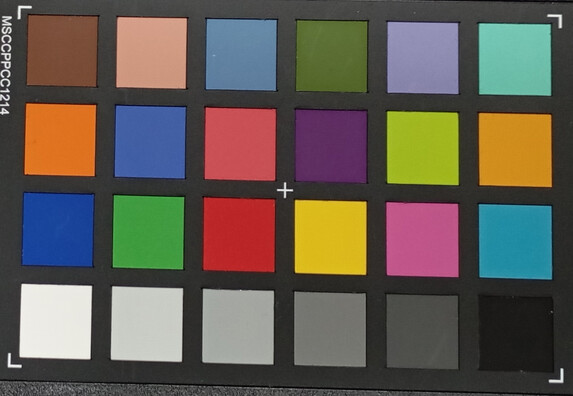
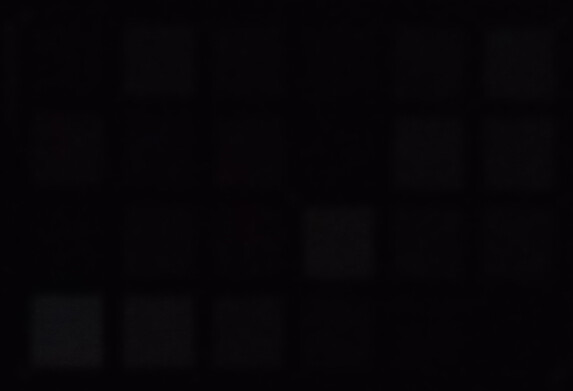
Accessories and warranty – No charger included
Buyers of the Xiaomi Redmi 13C shouldn't expect many accessories to be included with the phone: The box only includes a USB cable and a SIM tool—you'll have to do without a power supply or a silicone bumper.
Corresponding chargers can be purchased quite cheaply from Xiaomi's online shop. However, the manufacturer doesn't offer any special accessories specifically for this smartphone. Even so, you'll be able to find plenty of third-party accessories on websites such as Amazon.
For warranty information, the manufacturer states to use local laws as a guide.
Input devices & operation – A speedy fingerprint sensor on the Xiaomi phone
Xiaomi uses the standard Android app for its keyboard, too. Further keyboards can easily be downloaded and set as the device's standard if required.
Its touchscreen is scanned up to 180 times per second and can be operated precisely. Inputs are recognized and carried out quickly right into the corners and along the edges.
A fingerprint sensor is located within the phone's standby button on the right side of the case. Once fingerprints have been saved, it recognizes them reliably and unlocks the phone almost instantaneously as soon as you touch it.
You can also unlock the device via facial recognition and in good lighting conditions, it also works quite quickly and reliably.
Display – An IPS display with few pixels
The Xiaomi Redmi 13C features an IPS screen with a 6.74-inch diagonal, so it's a little bigger than its predecessor. Furthermore, the screen only has a maximum refresh rate of 90 Hz, whereby you can manually choose between 60 and 90 Hz or let the system adjust it automatically depending on the situation. It shows a slightly improved screen brightness of 424 cd/m² and it is more evenly lit.
The Redmi 13C's display does well when compared to the rest of the class, too. However, we have one issue to note: Yes, a 720p screen isn't completely out of the ordinary when it comes to phones below US$200 but still, there are enough models with a Full HD display to choose from nowadays. The difference in depiction is clearly noticeable, as edges don't look quite as clean and in general, the picture just doesn't look as clear as on higher-res screens.
On the plus side, the display boasts a relatively low black value, leading to colors not looking too pale.
| |||||||||||||||||||||||||
Brightness Distribution: 92 %
Center on Battery: 430 cd/m²
Contrast: 1536:1 (Black: 0.28 cd/m²)
ΔE ColorChecker Calman: 4.06 | ∀{0.5-29.43 Ø4.78}
ΔE Greyscale Calman: 5 | ∀{0.09-98 Ø5}
94.5% sRGB (Calman 2D)
Gamma: 2.35
CCT: 7813 K
| Xiaomi Redmi 13C IPS, 1600x720, 6.7" | Xiaomi Redmi 12C IPS, 1650x720, 6.7" | Motorola Moto G14 IPS, 2400x1080, 6.5" | Nokia G11 Plus IPS, 1600x720, 6.5" | Samsung Galaxy A14 LTE PLS, 2408x1080, 6.6" | |
|---|---|---|---|---|---|
| Screen | -6% | -8% | -23% | -54% | |
| Brightness middle (cd/m²) | 430 | 417 -3% | 486 13% | 395 -8% | 465 8% |
| Brightness (cd/m²) | 424 | 397 -6% | 478 13% | 385 -9% | 439 4% |
| Brightness Distribution (%) | 92 | 85 -8% | 92 0% | 94 2% | 89 -3% |
| Black Level * (cd/m²) | 0.28 | 0.35 -25% | 0.45 -61% | 0.3 -7% | 0.47 -68% |
| Contrast (:1) | 1536 | 1191 -22% | 1080 -30% | 1317 -14% | 989 -36% |
| Colorchecker dE 2000 * | 4.06 | 3.81 6% | 4.68 -15% | 6.21 -53% | 8.5 -109% |
| Colorchecker dE 2000 max. * | 8.11 | 7.2 11% | 7.33 10% | 10.61 -31% | 15.8 -95% |
| Greyscale dE 2000 * | 5 | 5.2 -4% | 4.8 4% | 8.3 -66% | 11.8 -136% |
| Gamma | 2.35 94% | 2.531 87% | 2.29 96% | 2.639 83% | 2.2 100% |
| CCT | 7813 83% | 7842 83% | 7691 85% | 7999 81% | 10757 60% |
* ... smaller is better
Screen Flickering / PWM (Pulse-Width Modulation)
| Screen flickering / PWM not detected | |||
In comparison: 53 % of all tested devices do not use PWM to dim the display. If PWM was detected, an average of 8108 (minimum: 5 - maximum: 343500) Hz was measured. | |||
In our tests using the spectral photometer and CalMAN software, we noted that the display has a slight blue tint, and quite a few colors show some deviations. All-in-all, its depiction is still pretty successful for such a cheap phone, meaning you'll still have colors presented as somewhat natural-looking.
We didn't note any PWM flickering on the display.
Display Response Times
| ↔ Response Time Black to White | ||
|---|---|---|
| 29.2 ms ... rise ↗ and fall ↘ combined | ↗ 14.4 ms rise | |
| ↘ 14.8 ms fall | ||
| The screen shows relatively slow response rates in our tests and may be too slow for gamers. In comparison, all tested devices range from 0.1 (minimum) to 240 (maximum) ms. » 77 % of all devices are better. This means that the measured response time is worse than the average of all tested devices (20.2 ms). | ||
| ↔ Response Time 50% Grey to 80% Grey | ||
| 44.9 ms ... rise ↗ and fall ↘ combined | ↗ 23.1 ms rise | |
| ↘ 20.8 ms fall | ||
| The screen shows slow response rates in our tests and will be unsatisfactory for gamers. In comparison, all tested devices range from 0.165 (minimum) to 636 (maximum) ms. » 76 % of all devices are better. This means that the measured response time is worse than the average of all tested devices (31.6 ms). | ||
You can definitely use the phone outside in shaded locations but even on cloudy days, you begin to notice annoying reflections that the display's poor brightness simply cannot compete with.
If you view the screen from the side, you may see some slight brightness shifts but in general, they shouldn't be too noticeable.
Performance – Good power for the price class
The Redmi 13C relies on the MediaTek Helio G85 as an SoC, which was already used in the predecessor model. So, you can hardly speak of innovation in this respect but in our benchmarks, this turned out not to be too big an issue, as the processor delivered good performance values for the price class: Oftentimes, the system came ahead of similarly priced smartphones and although its lead of around 20 % isn't huge, it's definitely noticeable.
This means you can navigate through the phone's menus well, but lags and unwanted waiting times can't be completely excluded when running more demanding apps.
One interesting thing is that the SoC actually understands AI calculations reasonably well, leading to the corresponding functions being accelerated compared to other entry-level smartphones.
| Antutu v9 - Total Score | |
| Average of class Smartphone (99654 - 2056989, n=26, last 2 years) | |
| Motorola Moto G14 | |
| Xiaomi Redmi 13C | |
| Average Mediatek Helio G85 (191865 - 231224, n=3) | |
| CrossMark - Overall | |
| Average of class Smartphone (187 - 2674, n=123, last 2 years) | |
| Motorola Moto G14 | |
| Xiaomi Redmi 13C | |
| Average Mediatek Helio G85 (280 - 394, n=5) | |
| Samsung Galaxy A14 LTE | |
| UL Procyon AI Inference for Android - Overall Score NNAPI | |
| Average of class Smartphone (3769 - 81594, n=135, last 2 years) | |
| Xiaomi Redmi 13C | |
| Average Mediatek Helio G85 (3849 - 5112, n=5) | |
| Samsung Galaxy A14 LTE | |
| Motorola Moto G14 | |
| AImark - Score v3.x | |
| Average of class Smartphone (82 - 307528, n=122, last 2 years) | |
| Xiaomi Redmi 13C | |
| Samsung Galaxy A14 LTE | |
| Average Mediatek Helio G85 (565 - 784, n=3) | |
| Motorola Moto G14 | |
The graphics benchmarks showed that you can't expect all too much from the inexpensive Redmi 13C: Even in the display's native resolution, slightly more demanding benchmarks run considerably below the smooth 30fps area. Applications can only be run extremely slowly in higher resolutions.
GFXBench (DX / GLBenchmark) 2.7: T-Rex Onscreen | 1920x1080 T-Rex Offscreen
GFXBench 3.0: on screen Manhattan Onscreen OGL | 1920x1080 1080p Manhattan Offscreen
GFXBench 3.1: on screen Manhattan ES 3.1 Onscreen | 1920x1080 Manhattan ES 3.1 Offscreen
GFXBench: on screen Car Chase Onscreen | 1920x1080 Car Chase Offscreen | on screen Aztec Ruins High Tier Onscreen | 2560x1440 Aztec Ruins High Tier Offscreen | on screen Aztec Ruins Normal Tier Onscreen | 1920x1080 Aztec Ruins Normal Tier Offscreen | 3840x2160 4K Aztec Ruins High Tier Offscreen
| 3DMark / Wild Life Extreme Unlimited | |
| Xiaomi Redmi 13C | |
| Xiaomi Redmi 12C | |
| Samsung Galaxy A14 LTE | |
| Motorola Moto G14 | |
| Nokia G11 Plus | |
| 3DMark / Wild Life Extreme | |
| Xiaomi Redmi 13C | |
| Xiaomi Redmi 12C | |
| Samsung Galaxy A14 LTE | |
| Motorola Moto G14 | |
| Nokia G11 Plus | |
| 3DMark / Wild Life Unlimited Score | |
| Xiaomi Redmi 13C | |
| Xiaomi Redmi 12C | |
| Samsung Galaxy A14 LTE | |
| Motorola Moto G14 | |
| Nokia G11 Plus | |
| 3DMark / Wild Life Score | |
| Xiaomi Redmi 13C | |
| Xiaomi Redmi 12C | |
| Samsung Galaxy A14 LTE | |
| Motorola Moto G14 | |
| Nokia G11 Plus | |
| 3DMark / Sling Shot Extreme (Vulkan) Unlimited Physics | |
| Motorola Moto G14 | |
| Samsung Galaxy A14 LTE | |
| Nokia G11 Plus | |
| Xiaomi Redmi 13C | |
| 3DMark / Sling Shot Extreme (Vulkan) Unlimited Graphics | |
| Xiaomi Redmi 13C | |
| Samsung Galaxy A14 LTE | |
| Motorola Moto G14 | |
| Nokia G11 Plus | |
| 3DMark / Sling Shot Extreme (Vulkan) Unlimited | |
| Xiaomi Redmi 13C | |
| Samsung Galaxy A14 LTE | |
| Motorola Moto G14 | |
| Nokia G11 Plus | |
| 3DMark / Sling Shot Extreme (ES 3.1) Unlimited Physics | |
| Motorola Moto G14 | |
| Xiaomi Redmi 13C | |
| Samsung Galaxy A14 LTE | |
| Nokia G11 Plus | |
| 3DMark / Sling Shot Extreme (ES 3.1) Unlimited Graphics | |
| Xiaomi Redmi 13C | |
| Samsung Galaxy A14 LTE | |
| Motorola Moto G14 | |
| Nokia G11 Plus | |
| 3DMark / Sling Shot Extreme (ES 3.1) Unlimited | |
| Xiaomi Redmi 13C | |
| Samsung Galaxy A14 LTE | |
| Motorola Moto G14 | |
| Nokia G11 Plus | |
| GFXBench (DX / GLBenchmark) 2.7 / T-Rex Onscreen | |
| Xiaomi Redmi 12C | |
| Xiaomi Redmi 13C | |
| Samsung Galaxy A14 LTE | |
| Motorola Moto G14 | |
| GFXBench (DX / GLBenchmark) 2.7 / T-Rex Offscreen | |
| Xiaomi Redmi 12C | |
| Xiaomi Redmi 13C | |
| Samsung Galaxy A14 LTE | |
| Motorola Moto G14 | |
| GFXBench 3.0 / Manhattan Onscreen OGL | |
| Xiaomi Redmi 12C | |
| Xiaomi Redmi 13C | |
| Samsung Galaxy A14 LTE | |
| Motorola Moto G14 | |
| GFXBench 3.0 / 1080p Manhattan Offscreen | |
| Xiaomi Redmi 12C | |
| Xiaomi Redmi 13C | |
| Samsung Galaxy A14 LTE | |
| Motorola Moto G14 | |
| GFXBench 3.1 / Manhattan ES 3.1 Onscreen | |
| Xiaomi Redmi 12C | |
| Xiaomi Redmi 13C | |
| Samsung Galaxy A14 LTE | |
| Motorola Moto G14 | |
| GFXBench 3.1 / Manhattan ES 3.1 Offscreen | |
| Xiaomi Redmi 12C | |
| Samsung Galaxy A14 LTE | |
| Xiaomi Redmi 13C | |
| Motorola Moto G14 | |
| GFXBench / Car Chase Onscreen | |
| Xiaomi Redmi 12C | |
| Xiaomi Redmi 13C | |
| Samsung Galaxy A14 LTE | |
| Motorola Moto G14 | |
| GFXBench / Car Chase Offscreen | |
| Xiaomi Redmi 12C | |
| Xiaomi Redmi 13C | |
| Samsung Galaxy A14 LTE | |
| Motorola Moto G14 | |
| GFXBench / Aztec Ruins High Tier Onscreen | |
| Xiaomi Redmi 12C | |
| Xiaomi Redmi 13C | |
| Nokia G11 Plus | |
| Samsung Galaxy A14 LTE | |
| Motorola Moto G14 | |
| GFXBench / Aztec Ruins High Tier Offscreen | |
| Xiaomi Redmi 12C | |
| Xiaomi Redmi 13C | |
| Samsung Galaxy A14 LTE | |
| Motorola Moto G14 | |
| Nokia G11 Plus | |
| GFXBench / Aztec Ruins Normal Tier Onscreen | |
| Xiaomi Redmi 12C | |
| Xiaomi Redmi 13C | |
| Nokia G11 Plus | |
| Samsung Galaxy A14 LTE | |
| Motorola Moto G14 | |
| GFXBench / Aztec Ruins Normal Tier Offscreen | |
| Xiaomi Redmi 12C | |
| Xiaomi Redmi 13C | |
| Samsung Galaxy A14 LTE | |
| Motorola Moto G14 | |
| Nokia G11 Plus | |
| GFXBench / 4K Aztec Ruins High Tier Offscreen | |
| Xiaomi Redmi 12C | |
| Xiaomi Redmi 13C | |
| Samsung Galaxy A14 LTE | |
| Motorola Moto G14 | |
| Nokia G11 Plus | |
Its web browser performance proved to be slightly speedier compared to other similarly priced devices. Websites load relatively quickly, whereas you'll often find yourself waiting for images to load.
| Jetstream 2 - 2.0 Total Score | |
| Average of class Smartphone (23.8 - 387, n=149, last 2 years) | |
| Xiaomi Redmi 13C (Chrome 121) | |
| Motorola Moto G14 (Chrome 115) | |
| Samsung Galaxy A14 LTE (Chrome 114) | |
| Average Mediatek Helio G85 (29.2 - 61.3, n=8) | |
| Speedometer 2.0 - Result 2.0 | |
| Average of class Smartphone (15.2 - 643, n=122, last 2 years) | |
| Xiaomi Redmi 13C (Chrome 121) | |
| Motorola Moto G14 (Chrome 115) | |
| Average Mediatek Helio G85 (27 - 48.6, n=7) | |
| Samsung Galaxy A14 LTE (Chrome 114) | |
| WebXPRT 4 - Overall | |
| Average of class Smartphone (27 - 306, n=145, last 2 years) | |
| Average Mediatek Helio G85 (51 - 62, n=4) | |
| Xiaomi Redmi 13C (Chrome 121) | |
| Motorola Moto G14 | |
| Samsung Galaxy A14 LTE (Chrome 114) | |
| Octane V2 - Total Score | |
| Average of class Smartphone (2228 - 121337, n=197, last 2 years) | |
| Xiaomi Redmi 13C (Chrome 121) | |
| Average Mediatek Helio G85 (10299 - 16763, n=16) | |
| Motorola Moto G14 (Chrome 115) | |
| Samsung Galaxy A14 LTE (Chrome 114) | |
| Xiaomi Redmi 12C (Chrome 112) | |
| Nokia G11 Plus (Chrome 114) | |
| Mozilla Kraken 1.1 - Total | |
| Samsung Galaxy A14 LTE (Chrome 114) | |
| Average Mediatek Helio G85 (2486 - 3939, n=9) | |
| Motorola Moto G14 (Chrome 115) | |
| Xiaomi Redmi 13C (Chrome 121) | |
| Average of class Smartphone (257 - 28190, n=154, last 2 years) | |
* ... smaller is better
The manufacturer hasn't given much thought to the phone's storage: It only has slow eMMC flash installed. Motorola shows that faster UFS storage can be expected even from smartphones as cheap as this.
As a result, you'll have to make do with longer loading times on the Redmi 13C every now and then.
| Xiaomi Redmi 13C | Xiaomi Redmi 12C | Motorola Moto G14 | Nokia G11 Plus | Samsung Galaxy A14 LTE | Average 128 GB eMMC Flash | Average of class Smartphone | |
|---|---|---|---|---|---|---|---|
| AndroBench 3-5 | 10% | 158% | -14% | -21% | -14% | 490% | |
| Sequential Read 256KB (MB/s) | 300.2 | 290.6 -3% | 888.6 196% | 270.6 -10% | 298.69 -1% | 300 ? 0% | 2228 ? 642% |
| Sequential Write 256KB (MB/s) | 179.4 | 225.1 25% | 538.1 200% | 196 9% | 200.17 12% | 195.1 ? 9% | 1852 ? 932% |
| Random Read 4KB (MB/s) | 101.5 | 112.9 11% | 221.3 118% | 81.5 -20% | 55.9 -45% | 85.9 ? -15% | 296 ? 192% |
| Random Write 4KB (MB/s) | 114.8 | 123.7 8% | 251.7 119% | 77.1 -33% | 55.86 -51% | 58.1 ? -49% | 339 ? 195% |
| Xiaomi Redmi 13C | Average 128 GB eMMC Flash | Average of class Smartphone | |
|---|---|---|---|
| PCMark for Android | -4% | 354% | |
| Storage 2.0 seq. read int. (MB/s) | 278 ? | 374 ? 35% | 1703 ? 513% |
| Storage 2.0 seq. write int. (MB/s) | 199.8 ? | 164 ? -18% | 1578 ? 690% |
| Storage 2.0 random read int. (MB/s) | 27.4 ? | 24.8 ? -9% | 43.1 ? 57% |
| Storage 2.0 random write int. (MB/s) | 32.5 ? | 23.9 ? -26% | 70 ? 115% |
| Storage 2.0 (Points) | 11998 ? | 11810 ? -2% | 59216 ? 394% |
Games – Not made for gaming
Gaming isn't necessarily a strength of the Xiaomi Redmi 13C. Although simple casual games can be run without any issues, more demanding games such as Genshin Impact or PUBG Mobile show that you can only make use of low settings. Even then, super-smooth 60fps are a distance away.
The games may still remain playable at high settings but due to them lagging so much, it probably won't be terribly fun. We tested the frame rates using the software from GameBench
In our test, operating the phone via its touchscreen and (depending on the game) position sensor worked absolutely fine.
Emissions – Noticeably warm
Temperature
After longer periods of load, we measured up to 45.3 °C on the surface of the phone. This is clearly noticeable and might get uncomfortable at times—not to mention that we carried out our measurements at room temperature, meaning the device may well get even warmer on hot days.
Even so, its performance is barely impacted by this: Even after 20 runs of 3DMark Wild Life or Wild Life Extreme, we measured similar frame rates compared to the beginning of the test.
(±) The maximum temperature on the upper side is 43.7 °C / 111 F, compared to the average of 35.2 °C / 95 F, ranging from 21.9 to 247 °C for the class Smartphone.
(-) The bottom heats up to a maximum of 45.3 °C / 114 F, compared to the average of 34 °C / 93 F
(+) In idle usage, the average temperature for the upper side is 23 °C / 73 F, compared to the device average of 32.9 °C / 91 F.
3DMark Wild Life Stress Test
| 3DMark | |
| Wild Life Stress Test Stability | |
| Xiaomi Redmi 12C | |
| Motorola Moto G14 | |
| Xiaomi Redmi 13C | |
| Samsung Galaxy A14 LTE | |
| Samsung Galaxy A14 LTE | |
| Nokia G11 Plus | |
| Wild Life Extreme Stress Test | |
| Xiaomi Redmi 13C | |
| Samsung Galaxy A14 LTE | |
Speakers
The speaker along the bottom edge is the only one the Redmi 13C has, so you'll have to make do with mono sound. The speaker reaches average volumes and doesn't distort even at maximum volume. However, it hardly manages to bring any warmth into its sound, as low mids and basses can hardly be heard.
For listening to music or watching films, the speaker should be sufficient but most external audio devices connected via the 3.5-mm jack or Bluetooth will sound better. Almost all currently popular codecs are available for audio transmission, including aptX TWS+ and LHDC V5.
Xiaomi Redmi 13C audio analysis
(±) | speaker loudness is average but good (80.8 dB)
Bass 100 - 315 Hz
(-) | nearly no bass - on average 36.8% lower than median
(±) | linearity of bass is average (9.8% delta to prev. frequency)
Mids 400 - 2000 Hz
(±) | higher mids - on average 5.7% higher than median
(±) | linearity of mids is average (8% delta to prev. frequency)
Highs 2 - 16 kHz
(+) | balanced highs - only 4.2% away from median
(+) | highs are linear (5.7% delta to prev. frequency)
Overall 100 - 16.000 Hz
(±) | linearity of overall sound is average (25.6% difference to median)
Compared to same class
» 63% of all tested devices in this class were better, 7% similar, 30% worse
» The best had a delta of 11%, average was 35%, worst was 134%
Compared to all devices tested
» 78% of all tested devices were better, 5% similar, 17% worse
» The best had a delta of 4%, average was 24%, worst was 134%
Samsung Galaxy A14 LTE audio analysis
(+) | speakers can play relatively loud (90.7 dB)
Bass 100 - 315 Hz
(-) | nearly no bass - on average 27.8% lower than median
(+) | bass is linear (4.9% delta to prev. frequency)
Mids 400 - 2000 Hz
(±) | reduced mids - on average 7.3% lower than median
(+) | mids are linear (6.4% delta to prev. frequency)
Highs 2 - 16 kHz
(±) | higher highs - on average 9.6% higher than median
(+) | highs are linear (2.5% delta to prev. frequency)
Overall 100 - 16.000 Hz
(±) | linearity of overall sound is average (23.5% difference to median)
Compared to same class
» 53% of all tested devices in this class were better, 8% similar, 39% worse
» The best had a delta of 11%, average was 35%, worst was 134%
Compared to all devices tested
» 69% of all tested devices were better, 6% similar, 24% worse
» The best had a delta of 4%, average was 24%, worst was 134%
Battery life – Runtimes fit for everyday use
Power consumption
The Xiaomi Redmi 13C is no power-saving wonder but even so, it doesn't use any more energy than similarly priced smartphones. Plus, it even boasts considerably lower consumption values than the Samsung Galaxy A14 LTE under average load.
It takes about two hours to fully charge the device from zero. The Redmi 13C comes without a charger and it didn't get on well with all of the chargers in our test: Our Apple charger activated Quick Charge, whereas the one from Honor didn't, although they are both able to deliver the same power.
| Off / Standby | |
| Idle | |
| Load |
|
Key:
min: | |
| Xiaomi Redmi 13C 5000 mAh | Samsung Galaxy A14 LTE 5000 mAh | Motorola Moto G41 5000 mAh | Average Mediatek Helio G85 | Average of class Smartphone | |
|---|---|---|---|---|---|
| Power Consumption | -20% | 4% | -19% | -28% | |
| Idle Minimum * (Watt) | 0.9 | 0.89 1% | 0.9 -0% | 1.171 ? -30% | 0.842 ? 6% |
| Idle Average * (Watt) | 1.4 | 2.31 -65% | 1.1 21% | 1.719 ? -23% | 1.439 ? -3% |
| Idle Maximum * (Watt) | 1.8 | 2.34 -30% | 1.6 11% | 2.18 ? -21% | 1.624 ? 10% |
| Load Average * (Watt) | 3.8 | 4.11 -8% | 4.3 -13% | 4.35 ? -14% | 7.03 ? -85% |
| Load Maximum * (Watt) | 6.7 | 6.46 4% | 6.5 3% | 7.06 ? -5% | 11.3 ? -69% |
* ... smaller is better
Power consumption: Geekbench (150 cd/m²)
Power consumption: GFXBench (150 cd/m²)
Runtimes
The Xiaomi Redmi 13C features a 5,000-mAh battery and it is in good company: Many other smartphones are equipped with similarly sized batteries.
The runtimes that Xiaomi is able to scrape out of this battery storage are generally good, but will by no means break any new records: The 15:48 hours we measured during our WLAN test should be enough to last you two days before having to reconnect your charger. You can use the phone at full power for 5:36 hours before having to connect it to the outlet again.
| Xiaomi Redmi 13C 5000 mAh | Xiaomi Redmi 12C 5000 mAh | Motorola Moto G14 5000 mAh | Nokia G11 Plus 5000 mAh | Samsung Galaxy A14 LTE 5000 mAh | |
|---|---|---|---|---|---|
| Battery runtime | -1% | 5% | 9% | -18% | |
| Reader / Idle (h) | 35.7 | 19.5 -45% | |||
| H.264 (h) | 22.5 | 17.4 -23% | |||
| WiFi v1.3 (h) | 15.8 | 15.6 -1% | 16.6 5% | 17.3 9% | 14.9 -6% |
| Load (h) | 5.6 | 5.8 4% |
Pros
Cons
Verdict – A modernized 4G phone for well below US$200
When it comes to the Redmi 13C, Xiaomi has done its homework, improving the smartphone in many areas compared to its predecessor: The biggest change is its new design, which feels much more modern and high-quality. Of course, it's still a plastic case, but it is built well and boasts great stability.
We were also very pleased with the phone's good runtimes and precise location services which, even in detail, don't leave much more to be desired. Such generous storage isn't always a given within this price range, either.
Its cameras are usable but as is typical for this class, fans of photography won't be enamored. Similar things can be said for the phone's speaker—you shouldn't set your expectations too high but in turn, you have access to a good variety of audio codecs if you choose to connect your Bluetooth headset.
For the next generation of this model, Xiaomi should really go the extra mile by installing a higher-resolution screen. Plus, it would be great to have the phone delivered with a charger included again.
The Xiaomi Redmi 13C is a modern and affordable smartphone. It benefits from promised updates, lots of storage and good location services.
A quick look at the alternatives: The Samsung Galaxy A14 LTE, too, promises updates spanning multiple years—plus, it features a decent camera. However, you'll have to make do with less performance if you go for this phone. The Motorola Moto G14 also offers lots of storage and it even comes with stereo speakers.
Price and availability
The Xiaomi Redmi 13C is currently on offer on Amazon for US$124.
Xiaomi Redmi 13C
- 03/04/2024 v7 (old)
Florian Schmitt
Transparency
The selection of devices to be reviewed is made by our editorial team. The test sample was provided to the author as a loan by the manufacturer or retailer for the purpose of this review. The lender had no influence on this review, nor did the manufacturer receive a copy of this review before publication. There was no obligation to publish this review. As an independent media company, Notebookcheck is not subjected to the authority of manufacturers, retailers or publishers.
This is how Notebookcheck is testing
Every year, Notebookcheck independently reviews hundreds of laptops and smartphones using standardized procedures to ensure that all results are comparable. We have continuously developed our test methods for around 20 years and set industry standards in the process. In our test labs, high-quality measuring equipment is utilized by experienced technicians and editors. These tests involve a multi-stage validation process. Our complex rating system is based on hundreds of well-founded measurements and benchmarks, which maintains objectivity. Further information on our test methods can be found here.




